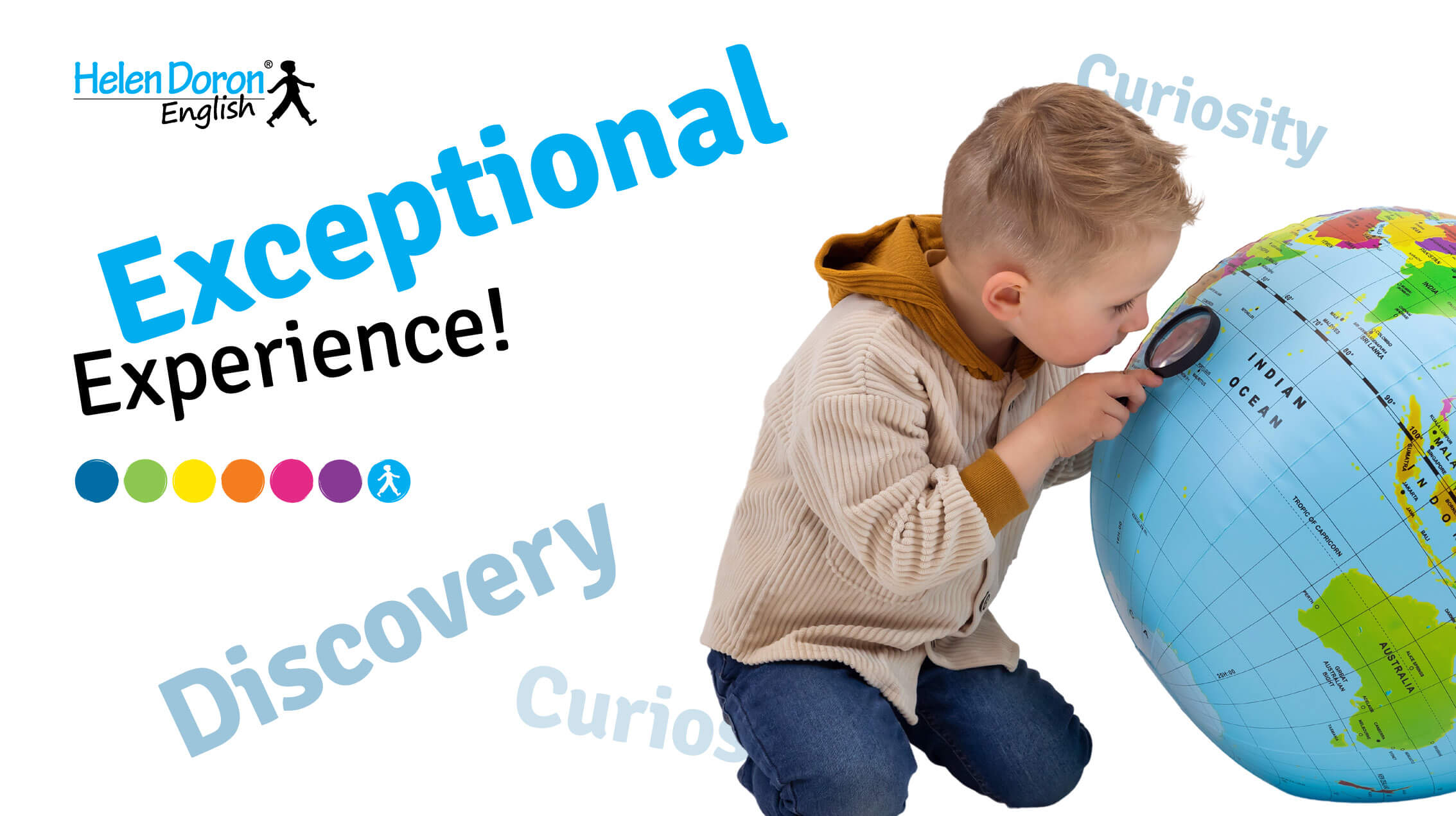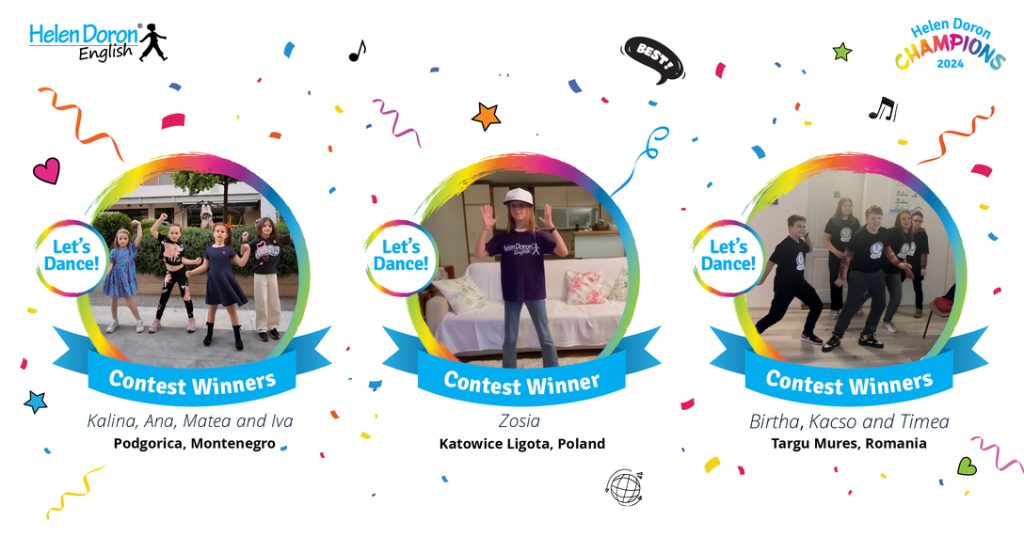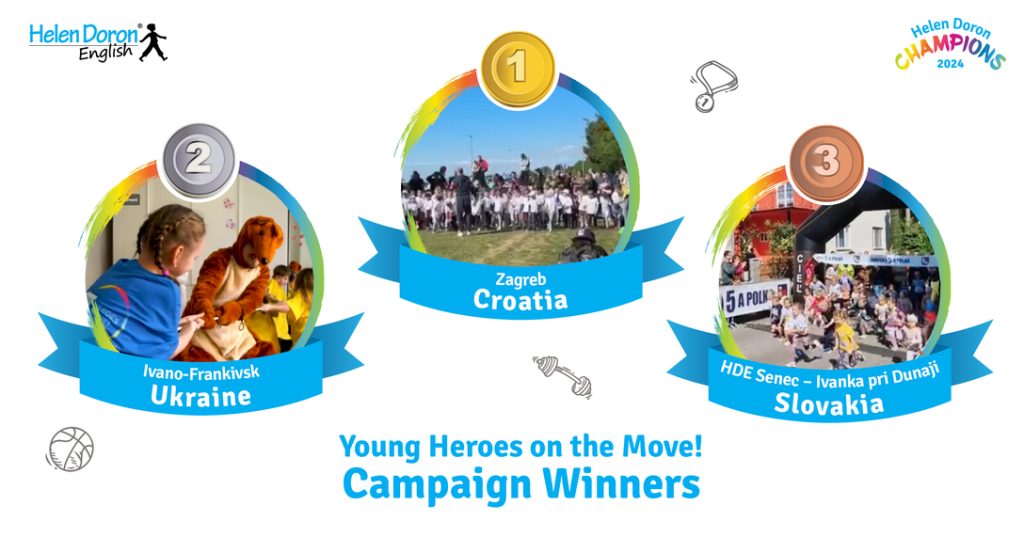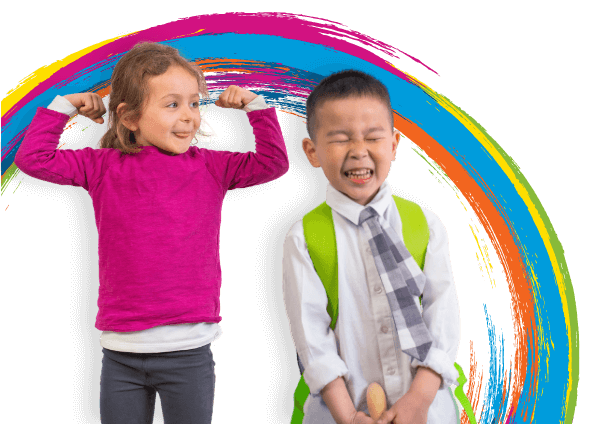Learning English with Helen Doron transcends traditional language education. Our philosophy is grounded in the belief that education should foster not only intellectual but also emotional and social growth. We invite you to embark on an ‘Exceptional Experience’, exploring the different aspects of our students’ unique ESL journey.
This blog post delves into how we cultivate an environment of curiosity and discovery, cornerstones of EFL learning and personal development, to provide a holistic educational journey for every child.
Curiosity: The Key to Effective English Learning in Children
Remember when your little one asked if trees made the wind or how birds fly? That’s curiosity – an adorable trait and a learning superpower, particularly in language acquisition. At Helen Doron English, we harness this power in our unique teaching methods, making English learning effective and enjoyable.
Curiosity is a magical lens that lets children see the wonder in the world around them. It turns the ordinary into extraordinary adventures of discovery. This eagerness to explore prepares them to be excited learners.
This innate sense of wonder fuels a child’s early learning experiences, especially in language acquisition. Through curiosity, children engage with their environment in a meaningful and enjoyable way, laying the groundwork for deeper understanding and retention. Curiosity evolves with the child, continuously shaping their understanding of the world around them.
Curious Minds Seek Informative Teachers
Even in their infancy, children are surprisingly clever about selecting their sources of learning. Research reveals that babies turn to adults who provide the information they seek, illustrating that they’re not passively waiting to be fed knowledge but actively seeking it out. Knowing this, a parent can use every game as an opportunity to expand a child’s horizons.
For instance, when a baby presents you with a toy cow, rather than playing clueless and simply asking, ‘What’s this? Can you tell me what this is?’ it’s more beneficial to respond informatively and engagingly, ‘Oh wow, you’re holding up a cow. Can you say cow? Moo, that’s the sound a cow makes!’
This approach feeds their curiosity and encourages them to practise speech and associate words with objects. By actively engaging in this way, especially in English, you leverage their natural curiosity and eagerness to learn, reinforcing your role as their most trusted source of knowledge and language development.
The Nature of Curiosity and Language Learning
Curiosity isn’t just an interest; it’s a driving force. If, for example, your child is fascinated by rainbows – drawing them everywhere, sleeping with rainbow bedcovers, getting excited by the sight of one in the sky – then you can use this curiosity to explore vocabulary and concepts related to the rainbow’s colours and the weather. Use your child’s interest to learn new words like ‘rain’ and ‘sunlight’ and understand the science behind rainbows.
If your child is learning English as a Second Language, use their interest in rainbows to learn the terms associated with it in English, too!
Keeping a child interested and engaged is essential for learning. In our lessons, we incorporate playful teaching activities. Our ‘It’s a Baby Dragon’ English course for toddlers uses engaging activities like ‘peek-a-boo’ and ‘magic box’ to enhance learning. We hide pictures of animals and characters in sensory boxes, prompting children to find them and identify what they’ve found. This teaches new words and engages them in a magical, exploratory learning experience. The anticipation, the element of surprise, and the sheer joy of pulling out a furry friend from the box easily entice young ones to call out the animal’s name. This invited the teacher to ask more questions, like ‘what kind of animal is it?’, ‘what colour is it?’, and so on.
Curiosity and Second Language Acquisition
Learning a second language is like embarking on an exciting treasure hunt, where every new word and phrase is a discovery of how to express thoughts and feelings in a whole new way. Curiosity is the trusted compass that guides this adventure.
This journey with language is about so much more than just words and grammar; it’s about diving into a sea of different cultures and swimming in new ways of thinking and living. When kids like Sara let their curiosity lead the way, they’re not just learning a language but embarking on a complete adventure. They soak up the linguistic bits and the socio-cultural and practical tidbits. Whether it’s getting hooked on English songs, enchanted by captivating stories, or simply wondering about new words, this natural curiosity transforms learning English from a task into a thrilling exploration. Who knows what wonderful discoveries await your child on this linguistic journey!
Incorporating ‘Sunny the Cat’ storybooks and animations into our ‘Baby’s Best Start’ course transforms lesson time into an enchanting narrative journey. This approach doesn’t just introduce new vocabulary; it immerses children in a world of imagination, making English learning an irresistible adventure.
Curiosity in Early Vocabulary Development
Studies show that kids focus better on learning about things that catch their interest. This means that what they’re curious about really shapes their early vocabulary. For some children, this can mean a fascination with animals. When a young learner loves animals, he or she will swiftly expand their vocabulary from ‘cat’ and ‘dog’ to include more complicated words like ‘giraffe’, ‘elephant’, and ‘kangaroo’. Meanwhile, a classmate might be interested in transportation and can name more than just a ‘car’ or a ‘bus’, retaining more complex nouns such as a ‘helicopter’, ‘space shuttle’ or an ‘oil tanker’.
So, if your child loves space, teaching them English words about stars and planets can be highly effective. If your child loves trains, use this interest to introduce related English words. Their natural curiosity about these subjects makes learning new words fun and more accessible.
In our classes, we delve into a wide array of topics such as fairy tale characters, flowers, animals, and even dinosaurs, ensuring that every child finds something that resonates with their interests.
Tailoring Learning to a Child’s Curiosity
Have you ever read ‘Goldilocks and the Three Bears’ to your little one? The story where Goldilocks finds things that are ‘just right’ for her? Not too hot, not too cold, but lukewarm porridge? Interestingly, this children’s tale offers a valuable lesson in understanding how kids learn best. This is known as the ‘Goldilocks Theory of Attention Allocation’.
Just as Goldilocks searched for things that were ‘just right’ for her, it’s important to strike the right balance when tailoring language learning to a child’s unique interests and knowledge base. When we teach English as a Foreign Language, we might skip basic words like ‘mama’ and ‘dada’, which might be too familiar, and avoid more complex ones like ‘constitution’ or ‘condensation’, which are likely beyond the students’ grasp. However, words like ‘apple’ or ‘puppy’ hit the sweet spot – new enough to be intriguing yet understandable to foster their curiosity and learning.
By carefully aligning our lessons and activities with each child’s learning style, interests, and capabilities, we ensure that their educational journey is as enjoyable as it is enriching, avoiding frustration, and keeping the spark of curiosity alive in each child. For instance, in our ‘It’s a Baby Dragon’ English course for toddlers, students are invited to ‘go for a drive’ in box cars, encouraging them to use new phrases like ‘I am going for a drive in my car’, thus expanding their vocabulary in a fun, immersive way – and more importantly – one they can relate to in their everyday lives.
Our Methodology: Research-Driven, Child-Focused
We understand that the heart of effective learning, especially in acquiring a new language, is nurturing children’s natural curiosity. Curiosity isn’t just an interest; it’s a profound desire to explore, to understand the unknown, and to make sense of the world. Our methodology and carefully crafted curricula provide a strong framework for children’s language learning journey, setting them on a path of lifelong learning and curiosity. By creating an environment where children feel safe to explore and use the English language, we encourage them to participate actively in their learning journey.
It’s about more than just vocabulary and grammar; it’s about engaging with the language in a meaningful and enjoyable way. We don’t just use flashcards to memorise words. Our teachers prepare props and bring real-life objects, such as food and everyday items, to the lessons. This way, children can use all their senses to explore the word in a tangible way.
When learning how to name numbers and count, we give abstract terms like ‘one’ and ‘two’ a physical form by using a tactile board divided into pizza slices. The children run their hands over the dots – feeling the number on the tip of their fingers. This makes the learning experience tangible and engaging, fostering both sensory development and language skills.
By harnessing curiosity and letting children take the lead in their language learning journey, we encourage many cognitive skills while expanding English vocabulary. For example, in our ‘Jump with Joey’ course for ages 6-9, students play a ‘Why-Because Game’ that teaches important concepts like cause and effect. Children connect pictures using string, forming logical pairs, and constructing sentences like, ‘Why did Robin take the gold coins? Because he wanted to help poor people.’ This not only expands their vocabulary but also develops critical thinking skills.
Choosing Helen Doron English for your child ensures they have an Exceptional Experience learning English the way children learn best – through wonder, awe, and curiosity. We make English learning a delightful adventure filled with new discoveries and achievements!
Reference:
Ackermann, L., Hepach, R., & Mani, N. (2020). Children learn words more easily when interested in the category to which the word belongs. Developmental science, 23(3), e12915.
Banerjee, K., Haque, O. S., & Spelke, E., S. (2013). Melting Lizards and Crying Mailboxes: Children’s Preferential Recall of Minimally Counterintuitive Concepts. Cognitive Science 37, 1251–1289. doi: 10.1111/cogs.12037
Bazhydai, M., Westermann, G., & Parise, E. (2020). “I don’t know, but I know who to ask”: 12‐month‐olds actively seek information from knowledgeable adults. Developmental science, 23(5), e12938.
Dohnalová, M. Š., & Barotová, B. M. An Examination of the Helen Doron Early English Methodology.
Jurman, K. (2017). Helen Doron as a Language Teaching Method-Insights from Parents (Doctoral dissertation, University of Rijeka. Faculty of Humanities and Social Sciences. Department of English Language and Literature).
Kidd, C., Piantadosi, S. T., & Aslin, R. N. (2012a). The Goldilocks Effect: Human Infants Allocate Attention to Visual Sequences Neither Too Simple Nor Too Complex. PLoS ONE, 7(5), e36399-e36399.
Kidd, C., Piantadosi, S. T., & Aslin, R. N. (2012b). The Goldilocks Effect in Infant Auditory Attention Child Development, 85(5): 1795–1804. doi:10.1111/cdev.12263
Kidd, C., Piantadosi, S. T., & Aslin, R. N. (2014). The Goldilocks effect in infant auditory attention. Child Development, 85(5):1795-804. doi: 10.1111/cdev.12263
Mani, N., & Ackermann, L. (2018). Why do children learn the words they do?. Child Development Perspectives, 12(4), 253-257.
Pluck, G., & Johnson, H. L. (2011). Stimulating curiosity to enhance learning. GESJ: Education Sciences and Psychology, 2.
Rokoszewska, K. (2013). The critical evaluation of the approach underlying the Helen Doron Method (HDM). pod redakcj¹ Hanny Kaczmarek i Mieczys³awy Materniak, 105.
Shah, P. E., Weeks, H. M., Richards, B., & Kaciroti, N. (2018). Early childhood curiosity and kindergarten reading and math academic achievement. Pediatric research, 84(3), 380-386.
Shah, P. E., Weeks, H. M., Richards, B., & Kaciroti, N. (2018). Early childhood curiosity and kindergarten reading and math academic achievement. Pediatric Research, 84, 380 – 386. https://doi.org/10.1038/s41390-018-0039-3
Stahl, A. E. & Feigenson, L. (2015). Observing the unexpected enhances infants’ learning and exploration. Science, 348(6230), 91-94. doi: 10.1126/science.aaa3799
Stahl, A. E. & Feigenson, L. (2017). Expectancy violations promote learning in young children. Cognition, 163, 1-14. doi: 10.1016/j.cognition.2017.02.008
Tulgar, A. T. (2018). The effects of curiosity on second language learning in terms of linguistic, social-cultural and pragmatic development. Adnan Menderes Üniversitesi Eğitim Fakültesi Eğitim Bilimleri Dergisi, 9(2), 59-72.








